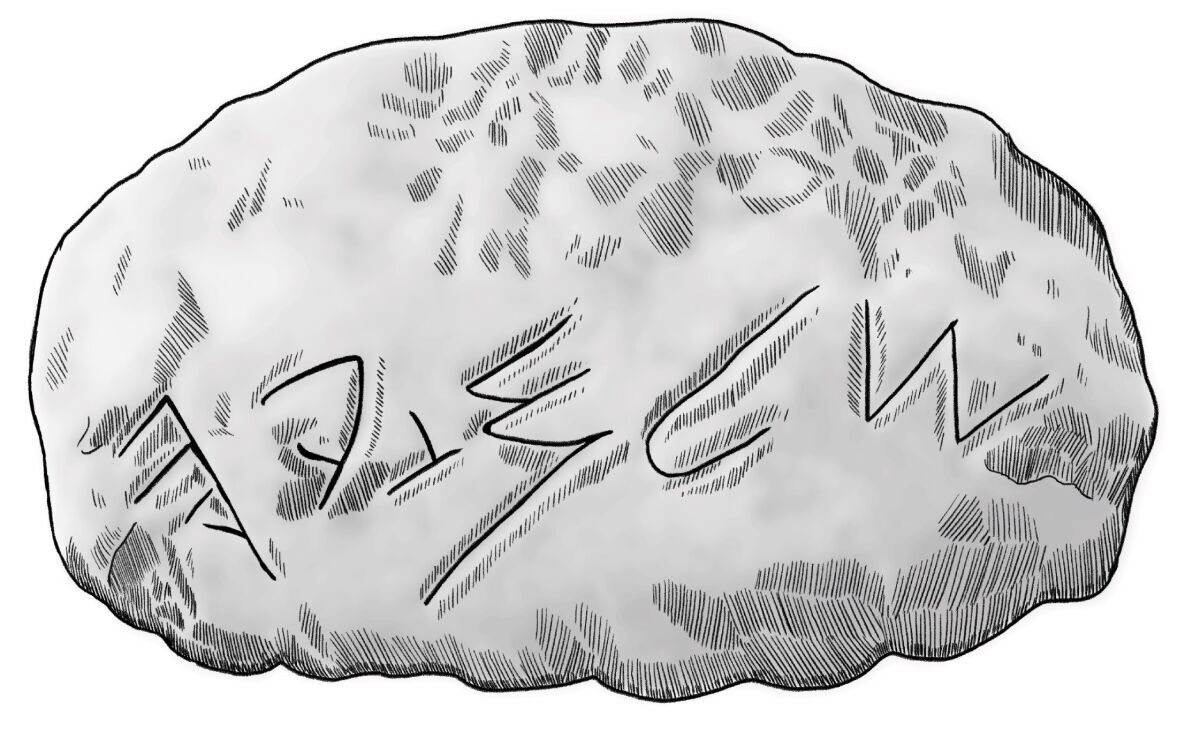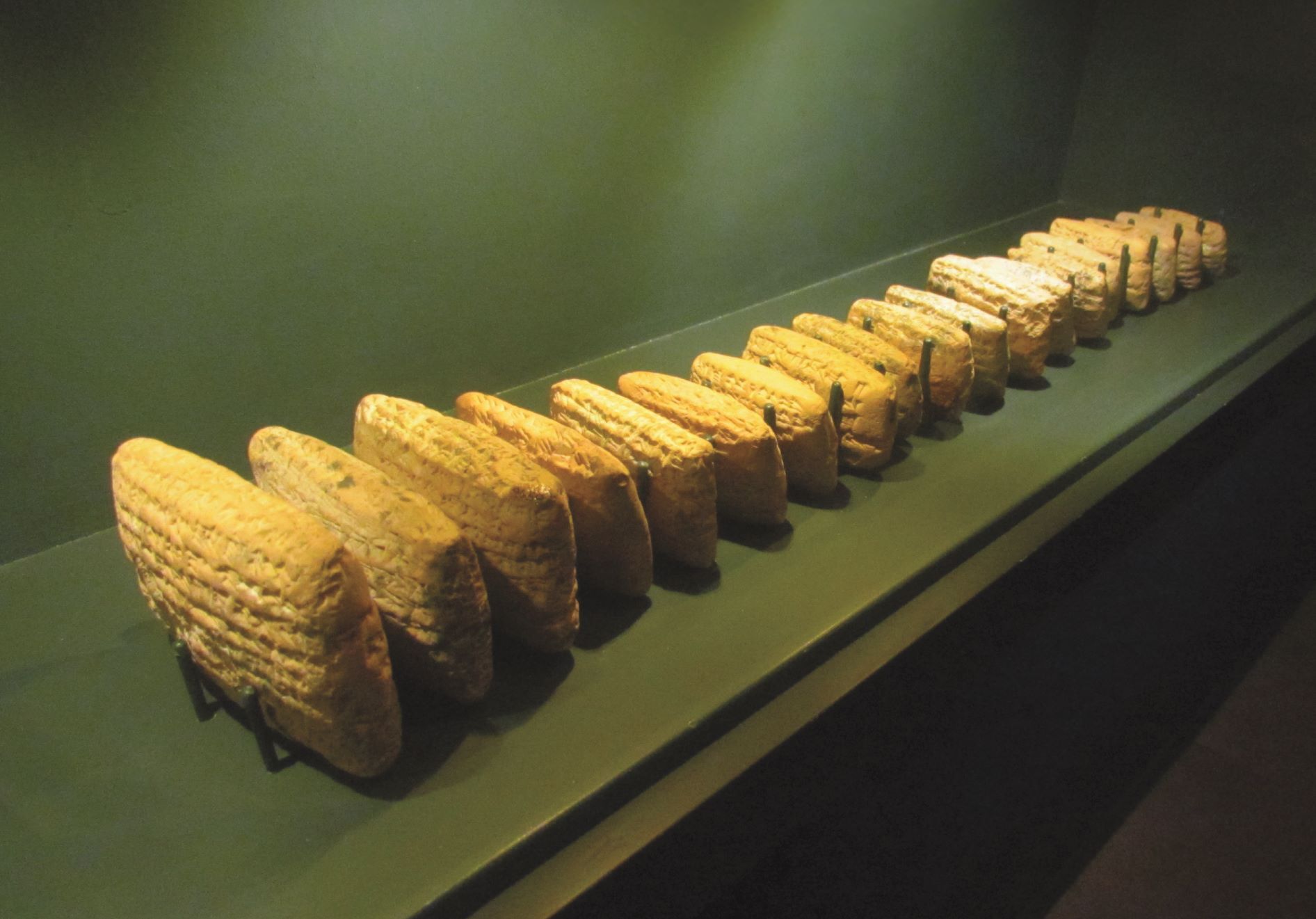King Nebuchadnezzar’s invasion of Judah in the late seventh century b.c.e. was the death knell for the nation. Between 605 and 586 b.c.e., successive incursions by the Babylonian army resulted in the destruction of Judah, the devastation of Jerusalem, and the exile of tens of thousands of Jews from their homeland.
The Prophet Jeremiah lived in Jerusalem during this turbulent time and delivered to the Jewish people God’s message of impending doom—but also hope. Jeremiah told the Jews that they would be in exile in Babylon for 70 years, but then would be given the opportunity to return to their homeland and their beloved capital, Jerusalem.
Jeremiah 29, likely written shortly after 598 b.c.e., records a letter to the newly exiled Jews in Babylon: “Thus saith the Lord of hosts, the God of Israel, unto all the captivity, whom I have caused to be carried away captive from Jerusalem unto Babylon: Build ye houses, and dwell in them, and plant gardens, and eat the fruit of them; take ye wives, and beget sons and daughters; and take wives for your sons, and give your daughters to husbands, that they may bear sons and daughters; and multiply ye there, and be not diminished” (verses 4-6). It’s a remarkable letter: Even in exile, the Jewish people would thrive.
How did the exiled Jews fare in Babylon?
Clay tablets from the land of Babylon give us the answer.
Tablets From Judah-town
In 2014, Laurie E. Pearce and Cornelia Wunsch published the study of more than 100 clay tablets discovered in modern-day Iraq. The ancient documents, which are written in neo- and late-Babylonian cuneiform, come from the private collection of David Sofer. Although they are unprovenanced, scholars consider the tablets to be authentic. These artifacts provide insight into the lifestyle of Babylon’s Jewish exiles.
The earliest documents date to 572 b.c.e., just 26 years after Jeremiah wrote his letter to the exiles. The last text in the collection is dated to 477 b.c.e., when Esther became queen in Persia. Over half of the tablets (54 in total) are part of the private archive of a man named Ahiqam, who happens to be from a conspicuously named town called Al-Yahudu in Akkadian or, in English, Judah-town.
Although the precise location of Judah-town is unknown, it is generally considered to be in the area of Nippur, around 100 kilometers (62 miles) southeast of Babylon. Thus, it is significant that less than two decades after the destruction of the temple there is textual evidence outside the Bible of a well-established Jewish community on the outskirts of Babylon.
The inscriptions record events you might expect in a rural community, such as land leases, receipts for payments (be it in dates or barley), sales of cattle, collections of taxes, division of estate inheritance after the death of a patriarch, and even loans. For these ancient Jews, they’re routine, boring details. For modern scholars, the tablets provide a rare glimpse into the lifestyle of an ancient Jewish community.

Dr. Kathleen Abraham, a specialist in ancient Babylonian history at Bar-Ilan University, described the tablets as showcasing the “day-to-day activities performed by the Judean exiles and their descendants, such as farming the land they had received from the Babylonian king in return for military service as archers, paying taxes, or settling matters of inheritance with the family.”
Although they were clearly from the lower echelon of society, the Jews of Judah-town lived a surprisingly unrestricted life. As long as they paid their rent and fulfilled military conscription, the king of Babylon left them alone. This underscores one of the differences between the Babylonian and Assyrian empires in regards to conquered peoples: While the Assyrians deported and scattered those they subjugated, the Babylonians often planted victims together in an underdeveloped part of the empire. Here, they could develop their new land and, in the case of Jews of Judah-town, even retain their native identity.
A Typical Example
One illuminating example of the Judah-town tablets is text number 10. The inscription was recorded in 549 b.c.e., about a decade before a contingent of Jews returned to Jerusalem with Zerubbabel. It details a simple promissory note written in cuneiform declaring that Shelemiah son of Nedaviah (both obviously Jewish names) owes barley to another man.
The translation by Pearce and Wunsch reads: “kor of barley are owed to Gummulu son of Bi-hamê by Šalam-Yāma son of Nadab-Yāma. In Simānu, he will deliver the barley in its principal amount in the town of Adabilu. Dalā-Yāma son of Ili-šū guarantees delivery of the barley. Witnesses: Šikin-Yāma son of Ili-šū; Balātu son of Nabû-nāsir; and the scribe, Nabû-nāsir son of Nabû-zēr-iqīša. Written in Judah-town, the 23rd day of Tebētu, the sixth year of Nabonidus, king of Babylon.”
The text, a typical example of the Al-Yahudu archive, is somewhat mundane. There is a debt owed, a guarantor is mentioned, and there are witnesses to the contract. Then the location and the date are given.
But there is also something utterly unique on this tablet. On the left side of the tablet, five paleo Hebrew letters are clearly visible. This is the language and script of the land of Israel, not Babylon. According to historian Jean-Philippe Delorme, it is the “only evidence for the use of this script outside the land of Israel.”
The Hebrew script spells the name Shelemiah (“slmyh”), the individual who owed the barley. The use of the Hebrew script shows that even though Aramaic was dominant, there were still people in Judah-town familiar with Hebrew and teaching Hebrew to their children. Even after almost 50 years in exile, the Hebrew language remained.
What’s in a Name?
The names of the inhabitants of Judah-town are also noteworthy because of what they tell us about the ethnic identity of the people and the degree of assimilation into Babylonian culture. There is a high concentration of names including “Ya,” “Yahu” and “Yama”—all theophoric elements linked to the God of the Israelites: yhwh. Examples of these Yahwistic names from the texts include Nadab-Yama (Nedavyah), Salam-Yama (Shelamyah) and Nahim-Yama (Nehemyah). There are also other Jewish names, such as Haggai (linked to “festival”) or Sabbatay (“the one of the Sabbath”).
Of the 313 individuals mentioned on the Judah-town tablets, 38 percent bear Yahwistic names (while 43 percent have Babylonian names). As noted by Delorme, this is an anomaly. Such a large percentage of names from a single foreign ethnic group “has never been observed for any other ethnic community living in Babylonia” (“The Al-Yahudu Texts (ca. 572–477 b.c.e.): A New Window Into the Life of the Judean Exilic Community of Babylonia”).
Interestingly, there is an even greater surge of Yawistic names found on the Al-Yahudu tablets, which are dated to 552–532 b.c.e., just before the conclusion of the 70 years of exile prophesied by Jeremiah. “The peak in popularity of Yahwistic names for the population of Al-Yahudu is contemporaneous with the emergent movement of a national revival that promoted the return to the land of Israel during the late neo-Babylonian and early Achaemenid periods,” Delorme wrote.
From what we can tell from the onomastic evidence, many of the Jews in Judah-town were likely aware of Jeremiah’s message delivered more than 50 years earlier. The biblical text shows that Daniel, who was alive at the time and living in Babylon, was aware of Jeremiah’s prophecy (Daniel 9:2). Daniel also told his people that while in exile in Babylon, they should build houses, marry, work the land, and thrive, which is exactly what the Al-Yahudu tablets reveal happened.
Jeremiah’s letter did more than merely describe Jewish exile; it also described their return to Judah. “… After seventy years are accomplished for Babylon, I will remember you, and perform My good word toward you, in causing you to return to this place [Jerusalem]. For I know the thoughts that I think toward you, saith the Lord, thoughts of peace, and not of evil, to give you a future and a hope” (Jeremiah 29:10-11). The book of Ezra records that over 40,000 Jews took the opportunity to turn that hope into reality and return back to their native homeland, and perhaps some of those were from the rural Babylonian village of Judah-town.

